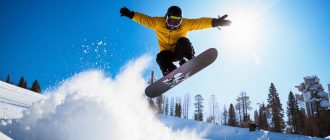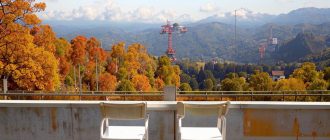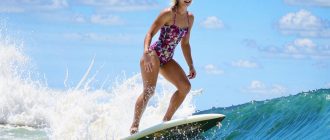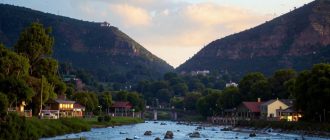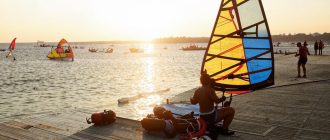
President of Pro-Vision, author of the Vinogradov.story community
“In the mid-2010s, creative clusters, landscaped parks, pedestrian embankments and streets – everything that urbanism combines with the term “public spaces” – appeared one after another on the Moscow map. The trend does not slow down even today: every year several new places are opened in the capital where it is pleasant to spend time between work and everyday life. I will tell you about the “proven” Moscow old-timers and promising newcomers below.
VDNKH
Since 2013, a huge territory of 325 hectares in the north-east of Moscow is experiencing its second birth. Soviet pavilions with references to the national culture get a new filling, green areas with ponds and fountains get a picturesque look, and the exhibition itself gets a clear and comfortable zoning.
It is easy to spend a whole day at VDNKh, getting acquainted with the traditions of the USSR peoples, tasting local and modern cuisine, dancing on the open areas and in the revived “Green Theater”. Here you can, in the best Soviet traditions, take a boat ride at the Golden Spike fountain and drink delicious lemonade. Or you can take a ride on the ultramodern Ferris wheel “The Sun of Moscow”, from where you can see the capital city like in the palm of your hand.

Baltschug embankments
Baltschug is an iconic place for Moscow: it was here, at the dawn of the formation of the capital’s public spaces, that first Krasny Octyabr, and then HPP-2 appeared. And if you cross the rivers encircling the island, you can reach “Zaryadya”, “Museon” and Gorky Park – in short, Baltschug was and remains at the epicenter of the capital’s improvement.
In recent years, the existing art, sports and park areas have been supplemented by renovated embankments – Sofiyskaya, Raushskaya, Sadovnicheskaya and Kosmodamianskaya. And on Bolotnaya Street, Repinsky Square, which was laid out for the 800th anniversary of Moscow in 1947, has been transformed. Today you can relax on benches and under lanterns made in the style of the 40s, and then continue your walk to the Cathedral of Christ the Savior or in the other direction – to the high-rise on Kotelnicheskaya Street.

HPP-2
Northern River Station
From the very beginning, the “younger brother of the Palace of Soviets”, the Northern River Station, was conceived not only as an infrastructure project, but also as a place of everyday recreation for the citizens. This idea was developed in the 2020s – and together with the restored building of the station and renovated piers, Moscow got a green space by the water with an amphitheater, swimming pools, restaurants and cafes. Conceptually, the park of the Northern River Station inherits, obviously, the “river” theme – and that is why Muscovites launch “ships” on the model of the Moscow Canal with special pleasure. A miniature copy of its “big brother”.

Yauza Park
Stretching along the Yauza riverbed from Mytishchi to VDNKh, the park has long outgrown the status of a district park. Instead, “Yauza” has the proud title of the longest park in Europe. Almost 20 km of pedestrian and bicycle paths, sports grounds, open stages and wooden embankments meet here with a bird park, the Sviblovo estate, cascading ponds, bridges and flower beds. In summer in “Yauza” almost every day there are concerts and open-air movie screenings, art studios and exhibitions, sports training and creative sections gather guests. And just to walk or ride a bicycle near the water in the July heat is a good idea for exhausted Muscovites.

Khokhlovka and its surroundings
Unlike other locations in this selection, the art quarter on Ivanovskaya Gorka was formed spontaneously and “from below” – on the initiative of creative citizens. Its boundaries are difficult to define: in the most general terms, it includes several courtyards in Khokhlovsky Lane, Morozovsky Garden, and a scattering of restaurants and galleries in Maly Trisvyatitelsky Lane.
But the heart of the neighborhood beats in the 17th century boyar chambers next to the Church of the Holy Life-Giving Trinity in Khokhliki. In the courtyards of Khokhlovka there are bars, works of street artists, workshops and showrooms of designers – everything that any creative space can’t do without. And history buffs will love the exteriors: the local houses are some of the oldest representatives of stone Moscow.
Peredelkino
In the 30s of the last century, Peredelkino became a “village of writers” – Pasternak, Chukovsky, Babel, Paustovsky, Okudzhava and Yevtushenko lived and created here. After almost 100 years in the village work House of creativity and literary hotel, meetings with authors and public readings, workshops and exhibitions. And the territory itself disposes to creativity: typical Moscow suburban dachas, furniture in the style of “Soviet midsentury”, deciduous forest and ponds – Peredelkino is imbued with inspiration, which lives here in every detail.

Moscow Seasons grounds with swimming pools
Being the “port of the five seas”, Moscow does not have its own water bodies suitable for swimming. And this, according to Pro-Vision Communications research, is one of the main reasons why Muscovites do not like summer. The problem is partially solved by the city swimming pools that have opened in parks and on the sites of the Moscow Seasons. Of course, they will not replace the real sea, but they will help to wait out the heat, relax and have a rest. In addition to swimming pools and “beach” infrastructure such as sun loungers and umbrellas, these spaces have places to work out and drink coffee, as well as something to entertain children. In short, at least for a few hours, believe that Moscow is almost a real resort city.



